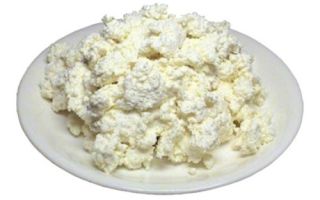Content
- 1 Composition and calorie content of fat-free cottage cheese
- 2 Is low fat cottage cheese good for you?
- 3 Does low fat cottage cheese help you lose weight?
- 4 Is it possible to eat low-fat cottage cheese at night
- 5 How much fat-free cottage cheese is digested
- 6 Is calcium absorbed from fat-free cottage cheese
- 7 The rate of consumption of low-fat cottage cheese
- 8 Which cottage cheese is healthier: fat-free or fat
- 9 How cottage cheese is defatted in production
- 10 The harm of low-fat cottage cheese
- 11 Conclusion
Some consider low-fat cottage cheese to be foods such as non-alcoholic beer and diet cola. And fitness fans find it an indispensable light source of protein and calcium. To figure out on whose side the truth is and what the real benefits and harms of low-fat cottage cheese are for the body will be relevant for everyone who cares about health.
Composition and calorie content of fat-free cottage cheese
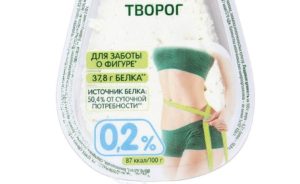
The first thing to know is that there is no completely fat-free cottage cheese, and the designation "0%" that the consumer sees on the packaging is a marketing ploy of the manufacturer. In fact, a fat-free product is called a product with indicators from 0.1 to 1.8%. The calorie content of 100 g of cottage cheese is characterized by indicators from 90 to 110 kcal.
The rest of the composition is related to the fatty varieties:
- vitamins A, B-groups, C, PP;
- phosphorus;
- cobalt;
- magnesium;
- iron;
- selenium;
- molybdenum.
Protein is 17 g, which is 25% of the daily human need, carbohydrates - from 1.8 to 2.75 g, or 1% of the recommended rate.
Up to 60% of the protein in the curd is casein, which is digested for up to 5 hours and creates a feeling of fullness.
Reducing easily digestible fat decreases the ability to break down casein.
The carbohydrates of the product are characterized as slow: this property is used by dietetics.
The glycemic index (GI) is 30 units, and the insulin index is 100 units.
The production technology includes a change in fat content, it is called the milk normalization process, which affects the loss of fat-soluble vitamins A, E D.
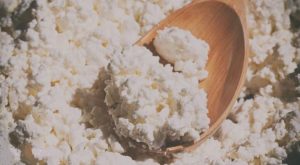
Is low fat cottage cheese good for you?
There is a debate about the benefits and dangers of low-fat cottage cheese both among nutritionists and supporters of a healthy diet for the body.
And there really is a reason for this, since a decrease in fat can affect the properties of a fermented milk product to be absorbed in full. But first things first.
First of all, it should be noted the undoubted benefits of cottage cheese, which is contained in a valuable composition, first of all, phosphorus and calcium, the positive effect of which on bone tissue is known to everyone. In addition, the beneficial effect extends to muscle contraction, blood clotting.
Due to the low calorie content and easy digestibility of the product, it will be useful on a diet for those who are losing weight, and for athletes, and for those who carry out a healthy body cleanse.
Regular inclusion of low-fat cottage cheese in the menu can normalize hemoglobin in the blood, as well as regenerative processes in the nervous system.
The properties of vitamins H, B1 and B12 are manifested in the synthesis of proteins and fats, the activation of components useful for normalizing the gastrointestinal tract system.
In addition, the alkaline reaction of the fat-free curd helps in shifting the pH balance to the optimum for the body.
The protein composition of a fermented milk product is useful as a building material for building cells of all body tissues.
The beneficial properties of low-fat cottage cheese also have a beneficial effect on the functioning of the kidneys, immune system, and cardiovascular system.
Basically, the benefits of the fat-free version are comparable to the fat-free counterparts.
Does low fat cottage cheese help you lose weight?
The use of low-fat cottage cheese for dietary purposes lies primarily in its low calorie content.
The dietary properties of a light fermented milk product are actively used in unloading diets to reduce excess weight and normalize the digestive tract.
With a mono-diet, it will be useful to increase meals up to 6 times, while reducing portions.
Examples of fasting days using fat-free cottage cheese:
- Curd and kefir. Food intake during the day is divided into 6 times, 100 g of low-fat cottage cheese and 150 ml of low-fat kefir;
- Fermented milk. The composition of products from 60 g of low-fat sour cream, 600 g of low-fat cottage cheese, 100 ml of milk is divided into 4 doses. You can also use rosehip broth as a drink - 3 tbsp.
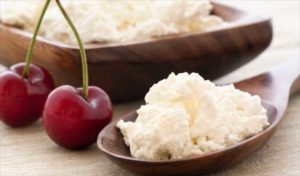
Is it possible to eat low-fat cottage cheese at night
The recommendations of nutritionists agree that the use of the product will be beneficial in the afternoon.
Due to the fact that the fat content of the product is minimized, it is generally accepted that eating it at night is not harmful, but the benefits are manifested in maintaining a feeling of satiety.
However, eating at night overloads the gastrointestinal tract, which does not work at its maximum functionality during sleep.
In addition, eating a high protein meal before bed can disrupt sleep. In addition to the harmful factors, nighttime snacks suppress growth hormones.
Given this, the use of a fat-free fermented milk product at night can be justified in the following cases:
- neutralizing excess insulin;
- as a sports nutrition: an evening snack with a protein product will be useful as a supply of building material for muscle fibers. Skimmed curd protein has been used to benefit bodybuilders and weightlifters due to its ability to promote muscle growth over time.
How much fat-free cottage cheese is digested
It may sound surprising, but fermented milk products, which are considered beneficial, take several hours to digest. It depends on the quality and fat content. Therefore, low-fat cottage cheese is considered light: the body spends up to 2 hours on its assimilation. To fully understand the dietary benefits of this indicator, cottage cheese with a fat content of more than 3% based on whole home milk will take up to 5 hours. The cost of other dairy products, such as yogurt, serum, glazed curds are from 5 to 10 hours.
Is calcium absorbed from fat-free cottage cheese
The negative side of skimming dairy products turns out to be harmful to the violation of their nutritional balance. For the benefit of assimilating the largest proportion of phosphorus and calcium, nutritionists advise using cottage cheese and other dairy products with a fat content of about 9%.
Thus, the negative side of reducing the natural proportion of nutrients affects the emasculation of their value in metabolic processes.
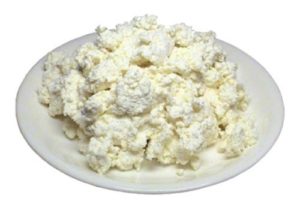
The rate of consumption of low-fat cottage cheese
According to the recommendations of nutritionists, the use of cottage cheese with a fat content of 0 percent for the average person is limited to a daily intake of 200 g, exceeding which threatens to harm the metabolic disorder. In some cases, the daily portion can be increased to 300 g.
The daily requirement for a protein product varies depending on the age and occupation of the person.
For children

Baby food should include all types of cottage cheese, however, a fresh medium-fat product (3 - 9%) has the advantage, while a low-fat version is still more suitable after 3 years and is used mainly for thermal processing.
Useful daily children's norm - 60 - 70 g.
Until the age of 3 years, specially developed options from baby food will benefit: such curd mixtures are optimally balanced in terms of nutritional components.
Especially and even the only useful will be the use of fat-free cottage cheese by children who are overweight - no more than 50 g per day.
For pregnant and nursing
The benefits of fat-free cottage cheese for women during pregnancy are indispensable precisely because of its dietary properties and in connection with the special need of the body during this period for protein and calcium, which have one of the leading values in the intrauterine development of the child. The recommended daily allowance is 100 g of product per day.
A useful property of a fat-free product is its ability to increase lactation. And for a newborn, its "lightweight" vitamin and mineral composition will be especially valuable. The daily norm can be considered 100 - 150 g.
For food allergies
Because calcium helps treat allergies, low fat cottage cheese is a good nutritional supplement alternative for allergy sufferers. Its use has benefits for strengthening the immune system of those with food allergic reactions.
To prevent possible harm, you should eat no more than 70 g of the product per day.
For athletes and bodybuilders
Low-fat cottage cheese not only helps to build muscle mass, but also helps in developing mental endurance, which is of undoubted benefit for athletes. Fat-soluble vitamins - retinol and ascorbic acid are powerful antioxidants.
If it is better for beginners to use medium-fat cottage cheese to grow muscle mass, then after adaptation to stress, a gradual transition to a separated version is recommended, the properties of which help build dry muscles, which helps to give the muscles an expressive relief. Low-fat cottage cheese closes well the so-called protein-carbohydrate window. The presence of casein and fast proteins will be beneficial for the regeneration of damaged fibers. The properties of the curd gainer (additive) after 30 minutes after training contribute to their active growth.
In order to ensure the maximum assimilation of proteins, the daily norm - 200 g - is divided into 2 - 3 doses. In drying mode, the daily dose is reduced to 150 g.
It is advised to consume low-fat cottage cheese before training 1 hour and after 1.5 hours after. However, the property of slowly dissolving carbohydrates to create an effect of lifting forces persists for 3 to 4 hours, so the interval can be increased to 2 hours before training.
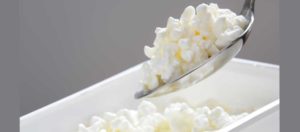
Which cottage cheese is healthier: fat-free or fat
The properties of a fat-free product change: a decrease in fat in the composition significantly reduces the presence of fat-soluble vitamins:
- A, responsible for the functions of vision;
- E, which has antioxidant properties;
- D, which helps to absorb calcium.
A decrease in the composition of these valuable vitamins leads to a deterioration in the absorption of calcium.
Both the low-fat and fatty versions of cottage cheese have their own useful features and disadvantages.
The benefits of the first are presented, first of all, by low calorie content, which is successfully used in dietary nutrition.
So, the nutritional value is 60 - 70 kcal more in 100 g for 5 - 9% cottage cheese and 120 kcal for the 18% option.
Fatty foods include harmful cholesterol, which contributes to the development of atherosclerosis.
Reduced protein and amino acid content reduces the presence of cephalin and lecithin. However, this applies more to fatty cottage cheese, since the amount of proteins in 18% of the product is slightly reduced: up to 15 g, in comparison with 18 g of fat-free.
In this regard, each type of cottage cheese is valuable, depending on the purpose.However, the maximum harm is possible from the use and especially abuse of a fatty fermented milk product.
How cottage cheese is defatted in production
In the food industry, obtaining low-fat cottage cheese is carried out on the basis of skim milk, which is pasteurized, then fermented thanks to the microflora of the crushed wheat germ flakes previously introduced into the composition for about 6 hours - to achieve the required acidity. After the composition is mixed, the curd is separated and a dietary product is obtained at the outlet. Then a stabilizer is introduced, thermization is carried out, then it is packaged and cooled.
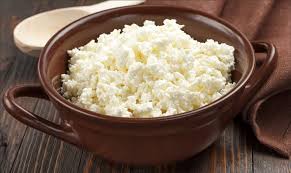
The harm of low-fat cottage cheese
Despite all the benefits of low-fat cottage cheese for the human body, it is important to understand all the risks that the product can potentially carry.
First of all, they relate to certain categories of people:
- The content of milk protein and lactose can cause reactions in people with individual intolerance to the components of the product;
- Cottage cheese as a protein product can be harmful for kidney disease, as it overloads them;
- Curd mass provokes the deposition of salts and the development of arthrosis, therefore it is prohibited for urolithiasis and gallstone pathologies.
Other causes of potential harm include:
- The content of hormones. Dairy products contain the hormones estrogen and progesterone, which are added to increase milk production in cows. The threat manifests itself in excessive early puberty in adolescence and the emergence of hormone-dependent oncological diseases (among them there is a high probability of cancer of the reproductive organs).
- Eating fat-free cottage cheese in excess of the norm leads to an increase in the risk of type 1 diabetes by one and a half times.
- The action of the hormone IGF-1 in curd, which promotes cell division, applies to both normal and cancer cells and is a risk factor for cancer.
- It is also known that cow's milk contains antibiotics, which are given to animals to accelerate growth: their presence in curd products can cause both resistance to anti-inflammatory drugs and malignant formations in the future.
Conclusion
The benefits and harms of low-fat cottage cheese are determined by its composition, quality and compliance with the recommended daily allowance.
The product contains useful properties "two in one": on the one hand, due to the correct balance of BJU and amino acid composition, it serves as a source of energy supply to the body and the formation of tissues and muscles, and on the other hand, its dietary characteristics. However, it is important to remember that the composition of milk contains hormones and antibiotics, the carcinogenic properties of which, if the product is abused, pose a particularly dangerous threat to health.

